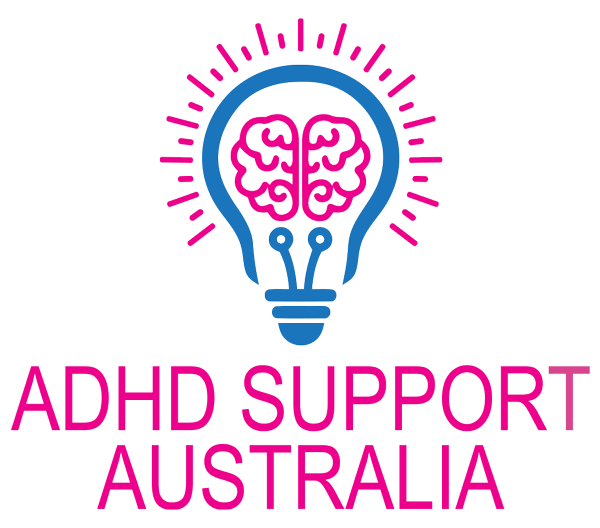
The Dangers of Social Media, Gaming, and Devices for Young People with ADHD & Autism
In an era where screens reign supreme and virtual connections often overshadow face-to-face interactions, the impact of social media, gaming, and excessive device usage on the mental health of our young people has become a pressing concern. This concern is amplified for vulnerable populations, especially those with ADHD, Autism, or who already experience social challenges and I see this on a daily basis supporting young people and families in the ADHD and Autism community.
While technology has undeniably transformed the way we communicate, learn, and entertain ourselves, its adverse effects on mental well-being, particularly among young people, cannot be ignored.
Renowned psychologist, Jonathan Haidt, author of a new book The Anxious Generation, warns about the detrimental effects of social media on the psychological development of young people. He argues that “Social media is an unsupervised environment that amplifies the social comparison process, which is very dangerous to adolescents, especially teenage girls.”
Indeed, platforms like Instagram and Snapchat provide fertile ground for comparison, where meticulously curated images of seemingly perfect lives can induce feelings of inadequacy and inferiority among impressionable youth. The incessant quest for likes, followers, and virtual validation perpetuates a cycle of self-doubt and anxiety, fostering an unrealistic standard of beauty and success.
Jean Twenge, a psychologist, specializing in generational differences and author of IGen, delves into the negative consequences of excessive screen time and digital immersion. From her research she observes, “Rates of teen depression and suicide have skyrocketed since 2011, around the time when smartphones became common.” Twenge’s research underscores a disturbing correlation between the rise of digital technology and the deteriorating mental health of our young people.
Smartphones and devices not only diminish sleep quality, but also hinder crucial developmental milestones, such as social skills and emotional regulation, something those with ADHD and Autism already struggle with.
Moreover, the neuroscientific perspective offered by Baroness Susan Greenfield, a leading neuroscientist and author of Mind Change – How Digital Technologies are Leaving Their Mark on Our Brains, sheds light on the impact of screen time on brain development. Greenfield cautions, “Excessive screen time can rewire the brain’s reward system, leading to heightened sensitivity to digital stimuli and diminished sensitivity to real-world experiences.” Her research highlights the neuroplasticity of the adolescent brain, emphasizing the importance of balanced digital consumption to mitigate the risk of addiction and cognitive impairments, especially among vulnerable populations.
For people with ADHD, the allure of digital stimuli poses a unique challenge. Jean Twenge notes, “The constant stimulation of technology can make it harder for kids with ADHD to focus on tasks that don’t provide instant gratification.” Social media platforms and immersive gaming experiences bombard users with a barrage of notifications, making it difficult for young people with ADHD to maintain attention and regulate impulses. This constant distraction exacerbates feelings of frustration and inadequacy, further compromising their mental well-being.
Similarly, young people with Autism face distinct challenges in navigating the digital landscape. Haidt emphasizes, “For those who have trouble reading social cues and making friends, it can be a godsend, but it can also be an addictive distraction from real-world social interactions.” While technology can serve as a valuable tool for communication and self-expression for young people with Autism, excessive screen time can hinder their ability to develop crucial social skills and forge meaningful connections offline. The inherent ambiguity of online communication further complicates social interactions, exacerbating feelings of isolation and alienation.
Moreover, for young people experiencing social isolation, digital devices often serve as a double-edged sword. Twenge observes, “For those who feel left out or isolated, technology can be a lifeline, connecting them with like-minded individuals and communities.” However, excessive reliance on social media as a means of validation and socialization can perpetuate feelings of loneliness and disconnection from reality. The curated nature of online interactions can create a distorted perception of social dynamics, further exacerbating feelings of inadequacy and social anxiety among vulnerable young people.
Adding to the discourse, Sherry Turkle, a professor of the social studies of science and technology at MIT and author of the book ‘Alone Together’, underscores the profound implications of technology on human relationships. She warns, “We’re seeing the consequences of a culture where we spend time together, not really together, but alone, together.” Turkle’s research highlights the paradox of connectivity in the digital age, where the illusion of constant connection masks a deeper sense of loneliness and disconnection. For vulnerable youth, this disconnect from authentic social interactions can exacerbate feelings of isolation and hinder their social-emotional development.
The pervasive influence of social media, gaming, and devices permeates every facet of young people’s lives, shaping their perceptions, behaviours, and identities. Haidt points out, “If you’re spending 6, 8, 10 hours a day on screens, that’s time you’re not spending on face-to-face social interactions.” As genuine human connections take a backseat to virtual interactions, young people become increasingly isolated and emotionally detached, exacerbating feelings of loneliness and alienation. The dopamine-driven reward system inherent in social media and gaming, hijacks the brain’s pleasure centres, fostering addiction-like behaviours and exacerbating mental health issues such as anxiety and depression.
I see so many challenges occurring as a result of screen use. Whether that be confrontations, aggressive behaviours when asked to stop, disconnecting from the family, casting aside past interests in order to make more time for screen use, decreased self-esteem, increased anxiety and depression and less social interactions, with real-life friends dropping away and young people keener to stay home on their device than to socialise in the real world. We’ve never been here in all of human history – this is new! This is a phenomenon that has crept up on parents over a relatively short period of time. But now we are seeing the effects of well-being and the addictive nature of our devices we can start to turn the tide.
Haidt emphasizes the importance of tailored interventions and support systems, stating, “We need to recognize that different kids have different vulnerabilities, and we need to provide support and guidance accordingly.” This includes providing resources and tools for managing screen time, fostering social skills development and promoting inclusive communities both online and offline.
Haidt also advocates for greater parental oversight and digital literacy education, asserting, “We need to teach kids how to use social media and video games in moderation.”
By fostering open communication and setting healthy boundaries, parents can empower their children to navigate the digital landscape responsibly, cultivating a balanced approach to technology usage. Additionally, fostering a culture of mindfulness and self-awareness can help young people cultivate resilience and mitigate the negative impact of digital saturation on their mental well-being.
That’s the reason I’ve created a step-by-step 12-week Digital Parenting Program that supports parents/carers in those very endeavours. The program helps parents understand why their young people find screens so compelling and to have empathy for that and then, to help them create healthier digital habits moving forward, so their young people can reconnect with their family, friends, and the real world once more and improve their overall well-being.
The potential dangers posed by social media, gaming, and excessive device use on our young people’s mental health are too significant to ignore. There’s an urgent need for collective action to address this growing epidemic. By fostering digital literacy, promoting healthy habits, and prioritizing genuine human connections, we can foster a more nuanced understanding of the digital landscape and empower young individuals to navigate it responsibly while safeguarding their mental and emotional well-being. It’s time to heed the warnings of these influential voices and chart a path towards a healthier and more balanced digital future for our youth.
Find out more about ADHD Support Australia’s Digital Parenting Program and create healthier digital habits in your family today!
The author, Vivian Dunstan, is Founder & CEO of ADHD Support Australia ADDCA trained ADHD Coach, Parent Coach & Facilitator of Parenting Children with ADHD – a 6-week online course, Certified Tech Addiction & Digital Health Educator (NIDHW) and Facilitator of the 6-week online Digital Parenting Program, Certified PEERS Social Skills for Teens & Young Adults coach and program facilitator, Certified NeuroACT provider & course facilitator, non-practicing teacher, parent of a young adult with ADHD and has ADHD herself.
